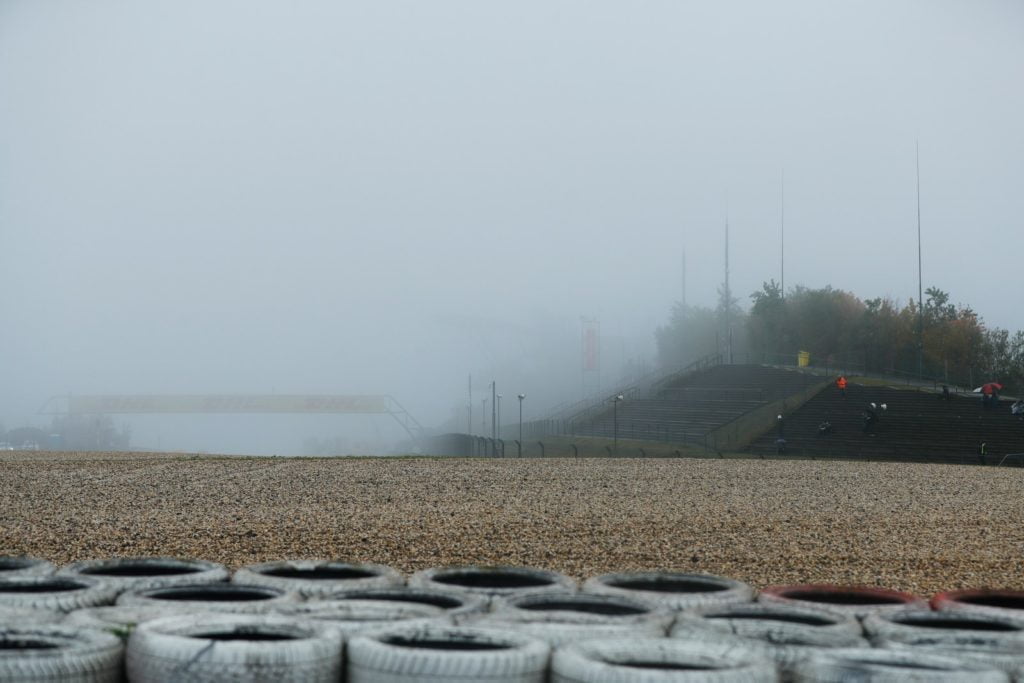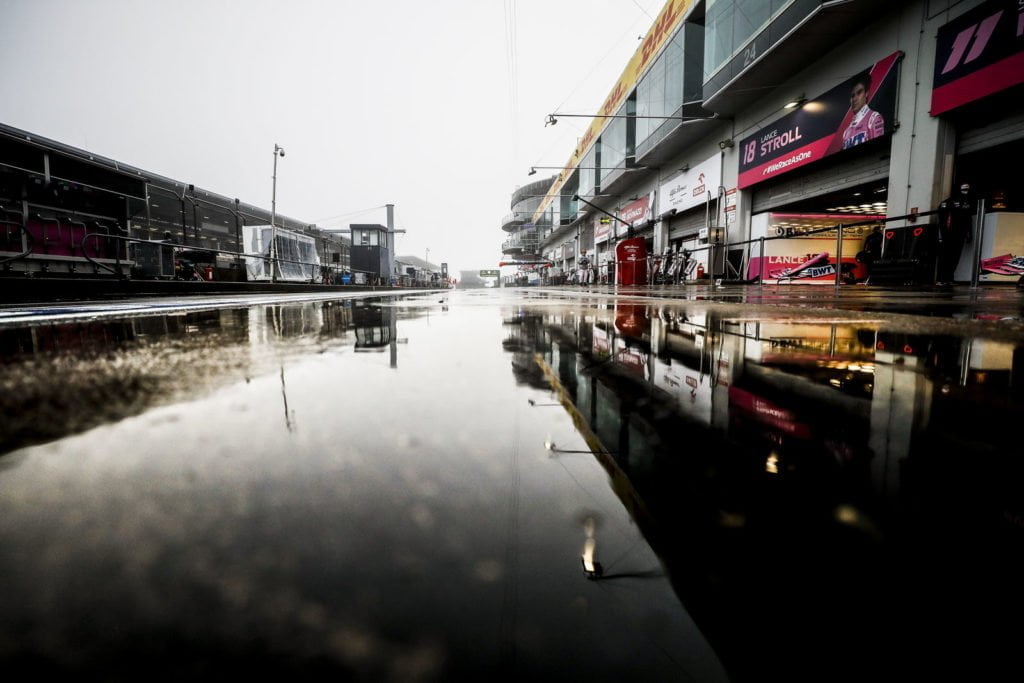Friday’s washed out – or even misted out – track running is not the first time that a grand prix weekend has been dogged by bad weather.
In Austin in 2015 the action was beset by miserable conditions while last year at Suzuka – where Formula 1 should have been this weekend – Saturday’s running was scrubbed off due to Typhoon Hagibis.
It did not go unnoticed that as everyone stared at an empty track at the Nürburgring another typhoon is about to bear down on Japan – every cloud and all that.
It was almost inevitable that heading to the Nürburgring in October would result in disruption and disappointment.
The venue’s location, within the low-lying Eifel mountain range, means it is susceptible to days like Friday – even in the height of the supposed summer.
The cloud and persistent misty showers meant the medical helicopter could not make a visual landing at the designated hospital and thus in the event of an emergency it posed a very real safety risk. The Nürburgring’s rural location meant that, unlike at some venues, the FIA could not rely on road transport given the relatively lengthy drive to nearest major towns Bonn and Koblenz. The requirement is a maximum of 20 minutes by road.

The ray of light is that the miserable weather put the kibosh on Friday’s track running rather than impacting the business side of the weekend.
For Formula 1 teams and drivers the two practice sessions are important in terms of getting up to speed, evaluating new components, and to gather as much data as possible.
For fans it is a three-hour opportunity to catch a glimpse of the cars and the drivers, and even some new faces, with Mick Schumacher and Callum Ilott hampered by the conditions.
But Formula 1 has rigidly kept its current format for over a decade, only pushed into a revised format by weather, circumstance or Monaco’s desire to have Friday as a ‘recovery day’.
Under Liberty Media there has been a renewed desire to shake up the race weekend format.
Talk of reversed-grid races has dominated this talk but there has also been discussion to either scrap Friday’s track running or to implement a different programme.
The hope is that the less data the teams have, and the less experience the drivers have, the more the participants have to think on-the-fly, potentially throwing up more unknowns and opportunities, thus aiding the quality of the races.
The Covid-19 pandemic has had a widespread impact on the world and Formula 1 has not been immune from its effects.

The logistical challenge in getting from Portugal to Italy contributed to the decision to run a two-day weekend for the upcoming Emilia Romagna Grand Prix at Imola.
There is to be just one 90-minute practice session prior to qualifying and the race at a venue where only one current driver – Kimi Raikkonen – has prior representative Formula 1 experience.
But Imola’s USP has almost certainly been grabbed by the Nürburgring.
Friday’s washout means Formula 1 teams and drivers will be starting afresh at the Nürburgring on Saturday morning, with only a one-hour session prior to qualifying.
It is highly unlikely that similar issues will affect the championship on Saturday given that the forecast is for sunny spells for the remainder of the weekend.
Only seven of the current drivers have prior Formula 1 experience at the Nürburgring and that was in a different era, making most of the data gathered that weekend redundant.
For the others, even accounting for simulators and junior experience, it is going to be a step into the unknown.
Formula 1 was set to trial its two-day format at a returning event at Imola but the fickle weather in the Eifels has led to an unexpected premature experiment at the Nürburgring.










